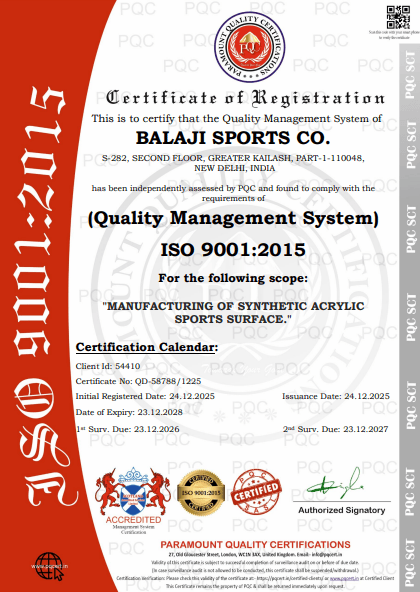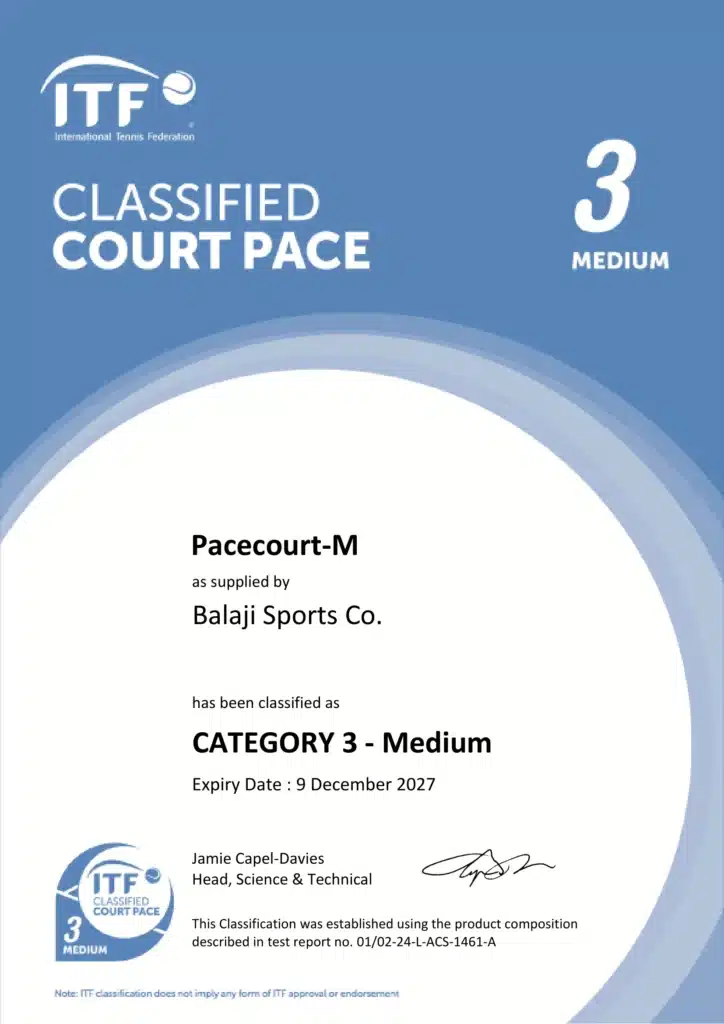Exploring the Different Types of Tennis Courts
Introduction Tennis is a nimble and accurate sport, and the court surface has a big impact on that. The quality of the game overall, player outputs, and protection are all directly impacted by the type of tennis courts you choose. Pacecourt, one of the top providers of sports court supplies well-versed in selecting the ideal product for your requirements. This comprehensive guide will look at the various types of tennis courts and emphasize why the ideal flooring for sports facilities is acrylic. Furthermore, we will offer concrete instances that demonstrate the advantages of employing these kinds of acrylic surfaces. Understanding the Different Types of Tennis Courts Different materials can used to make tennis courts, and each kind unique qualities that affect how the game is played. The following groups primarily comprise tennis courts: Every kind of surface has benefits and drawbacks that vary according to the players’ skill level, the environment, and upkeep needs. Let’s examine each type of surface in more detail. Clay Courts Because clay courts are a slow-paced game, they are favored in Europe and South America. Crushed shale, stone, or brick make up the surface, which offers high traction and permits sliding into shots. Pros of Clay Courts: Cons of Clay Courts: Grass Courts Grass courts, which compared to the iconic Wimbledon courts, and regarded by many as the best surface for tennis matches, are associated with luxury and a more conventional way of life. The game moves quickly on grass courts due to the surface’s variable slopes. Pros of Grass Courts: Cons of Grass Courts: Hard Courts Hard courts usually consist of concrete or asphalt and offer a well-balanced game speed. Due to their longevity and low care requirements, they are well-liked in public parks and recreation centers. Pros of Hard Courts: Cons of Hard Courts: Acrylic Courts Acrylic courts are one type of hard court that has a uniform, smooth surface because they are painted with acrylic. These courts are becoming more and more popular because of their long lifespan, low maintenance requirements, and range of customizable color possibilities. Pros of Acrylic Courts: Cons of Acrylic Courts: Why Acrylic Courts Are the Best Choice for Outdoor Sports Surfaces Among all the options, acrylic courts stand out as the best choice for outdoor sports surfaces. Here’s why: Durability and Weather Resistance The acrylic courts designed to withstand all types of weather conditions, from intense sunburn to torrential downpours. Players can utilize acrylic surfaces year-round because, unlike clay or grass, it doesn’t contain a significant amount of mud or water that would cause it to become slick. When applied to an acrylic surface, they develop an ultraviolet resistance that keeps them from fading and acts as a barrier to maintain their brightness at all times. Low Maintenance Requirements Acrylic courts material require less maintenance than other surfaces. Continuous rolling, watering, or mowing are not necessary. Basic maintenance, such as periodic sweeping and power washing, suffices to keep the court in good condition. This indicates that acrylic courts are more affordable for sports facilities since they require less upkeep over time and have lower long-term expenditures. Enhanced Performance and Safety It is essential for competitive play that the ball leaves the surface with the proper bounce. This surface’s texture can changed to provide varying degrees of grip, which will prevent players from slipping as they play and ultimately ensure their safety. Additionally, the cushioned layers under acrylic surfaces provide shock absorption, relieving joint tension in athletes and lowering the risk of injury. Customization and Aesthetic Appeal The courts may be painted in a variety of colors and tones thanks to acrylic materials, giving facility owners the chance to use their favorite colors for the playing surface. For both fans and players, the creative variety heightens the excitement. Case Studies Case Study: Upgrading a Public Park Tennis Court To improve the playing experience for the local community, the Delhi Public Park decided to upgrade its aging tennis courts. They opted for acrylic floors, understanding their advantages over the court’s performance and resilience. Project Overview: The Process: Initially, the project started with taking off the old broken surface. A primer then put on the prepared and leveled surface for strong adhesion. This was followed by multiple layers of acrylic coating, which yielded a smooth and long-lasting finish. Finally, markings of official dimensions made on the courts so that they could agree with the required standards. Results: The enhanced courts received high satisfaction rates from the locals. The players acknowledged the better grip and even ball bounce that significantly improved their play. Additionally, the bright color of the new surface made those courts more attractive, hence increasing their utilization. Case Study: Enhancing a University’s Tennis Facilities Tennis facilities at a university in Chennai need to be improved for its expanding tennis program. The management chose to invest in acrylic flooring for their outdoor tennis courts to provide students and athletes with a good playing surface. Project Overview: The Process: The courts that were already built in the community were thoroughly cleaned before the cracks that they had were repaired. To ensure a good grip on the new acrylic surface, a primer was applied. Several coatings of acrylic paint were layered on its surface to make it smooth and long-lasting. To make sure that they meet official standards, these courts were marked out with precise dimensions. Results: The University’s athletic facilities were dominated by new courts. Recreational and competitive players alike praised the consistent playing surface and better traction. Also, vibrant colors on the courts improved campus aesthetics. Key Considerations When Choosing a Tennis Court Surface Selecting the right tennis court surface depends on several factors, including: Installation Process for Acrylic Tennis Courts The installation of tennis courts involves several critical steps to ensure a high-quality finish: Site Preparation Start by doing a thorough site preparation. To create a solid foundation, the earth must be leveled, enough drainage must be provided, and the area must be stabilized. Sufficient planning averts




